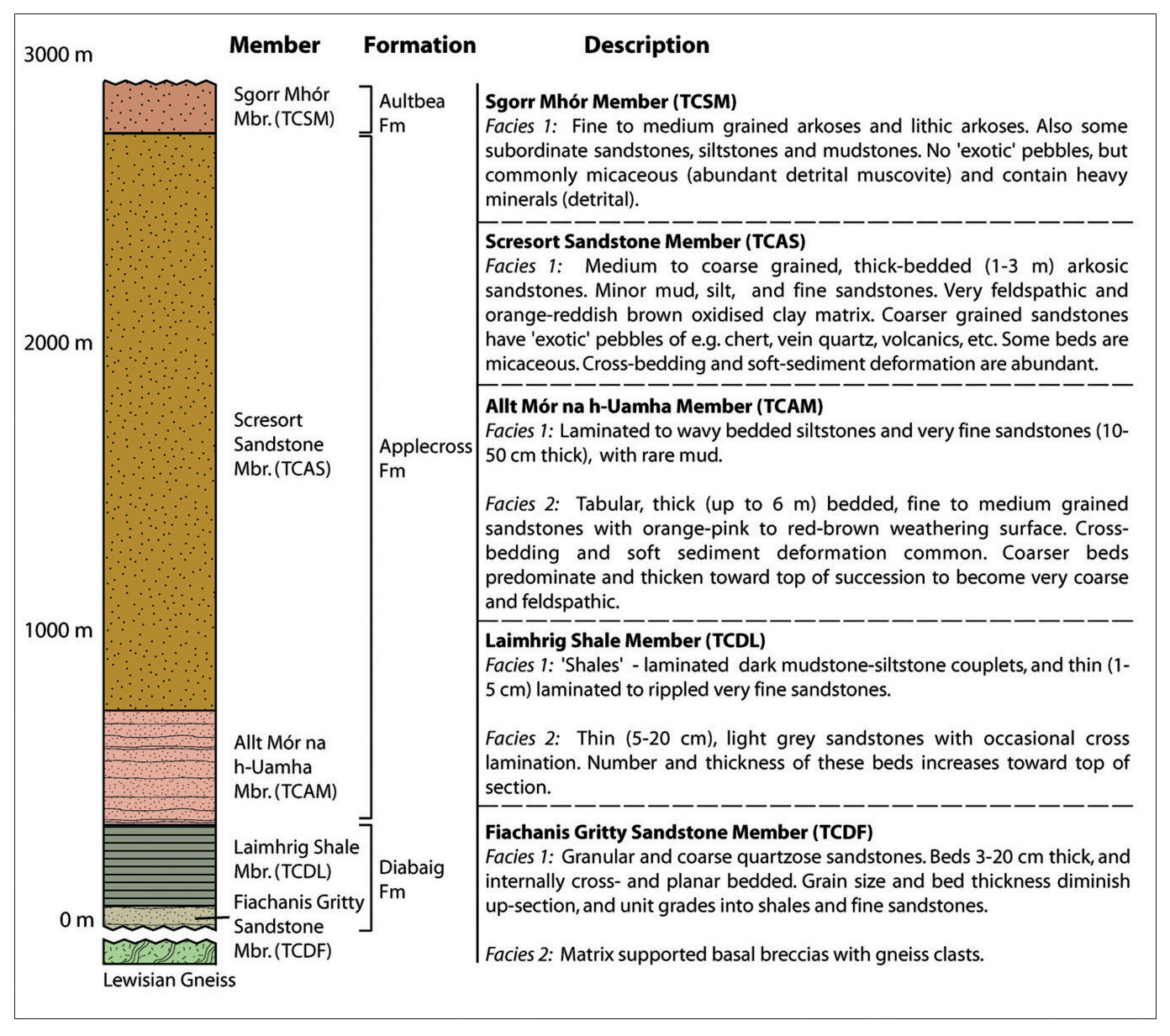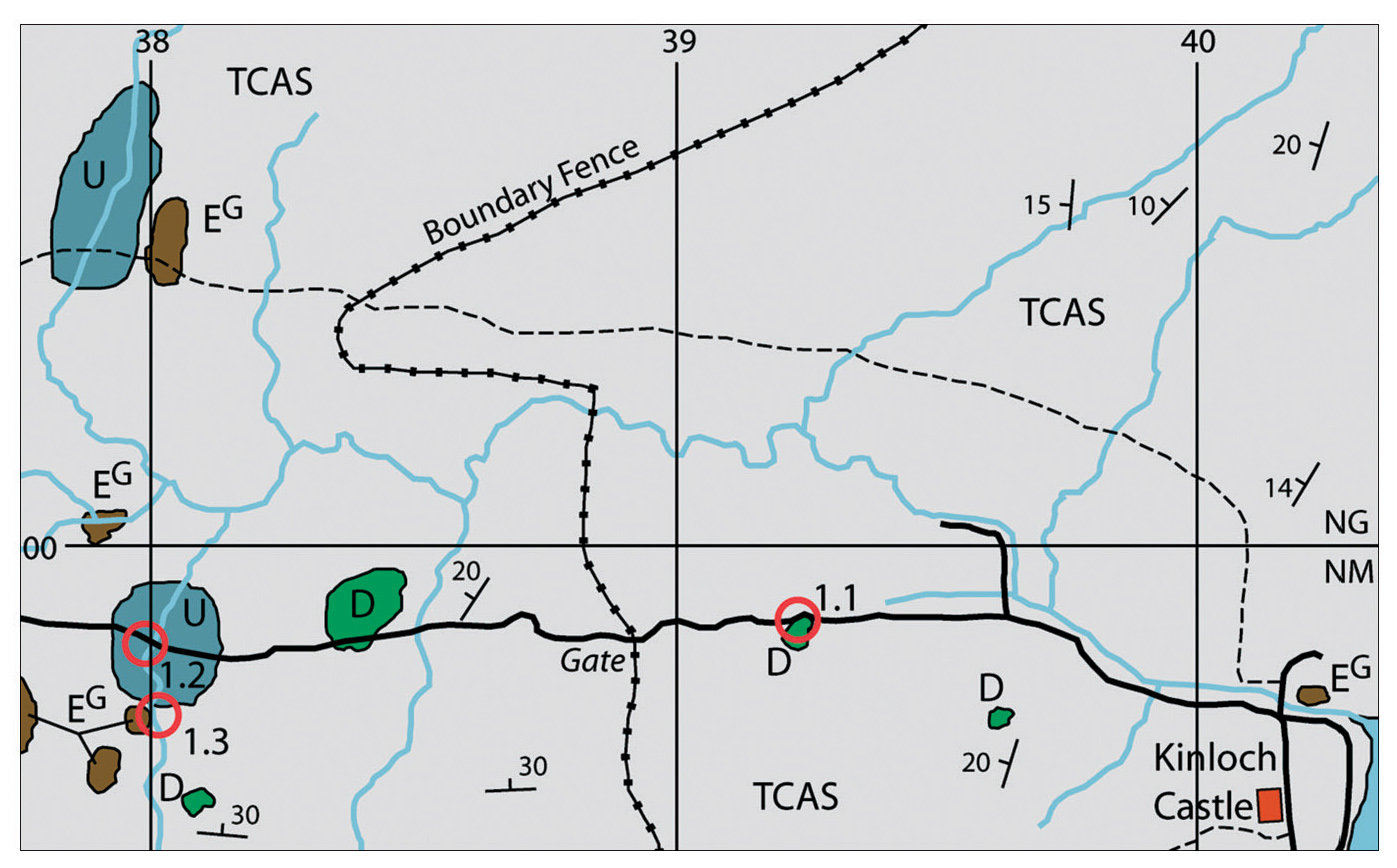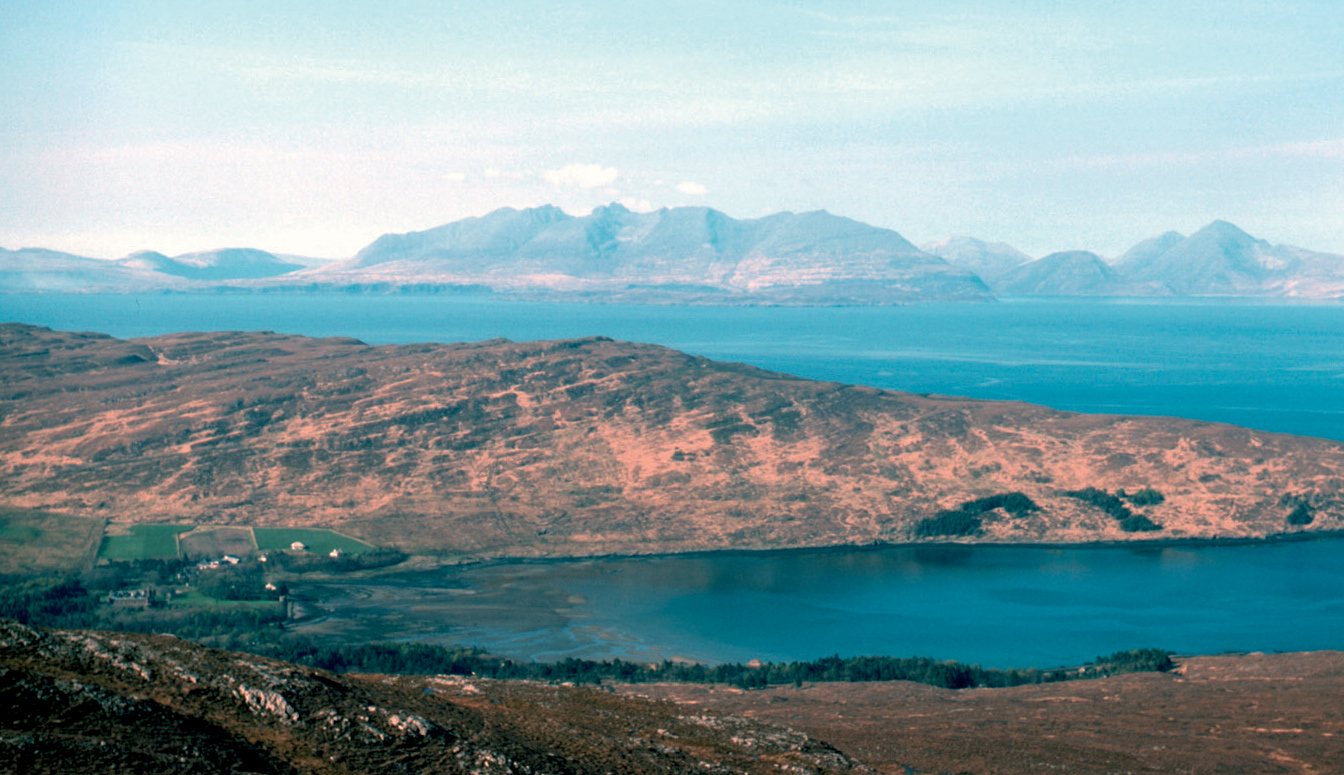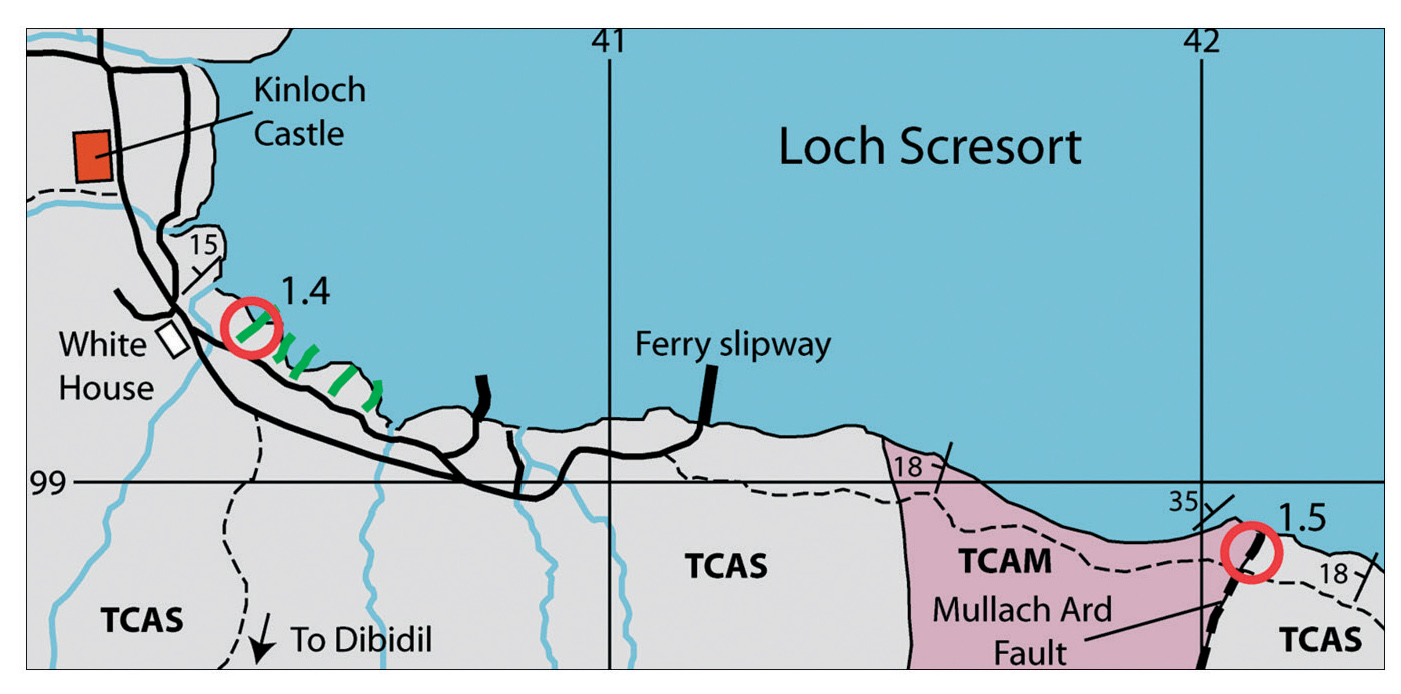Excursion 1 Kinloch and surroundings
Highlights
Minor basic and ultrabasic intrusions will be seen on the first part of the excursion, with spectacular metamorphism of the country rocks. The distinctive topography associated with the
The boat from Mallaig normally reaches Rum before 2pm, except on summer Saturdays when the early service arrives at about 9am. The first afternoon may be spent around Kinloch, on the sandstones of the
A. West of Kinloch
Take the Kilmory road west from Kinloch, along Kinloch Glen
Locality 1.1 Kinloch Glen — sandstone intruded by dolerite plug and sheet [NM 3927 9987]
About 1 km from Kinloch a small dolerite plug and a south-dipping dolerite sheet are exposed in the roadside. Sandstone near the dolerite is somewhat bleached and has developed numerous irregular joints, both of which are features typically found near the numerous small doleritic and gabbroic intrusions in northern Rum.
Pass through the deer fence (close the gate) and continue along the track for 900 m, noting several north-trending dykes and exposures of dolerite (plugs).
Locality 1.2 Bridge over Allt Bealach Mhic Neill – peridotite plug in sandstone [NM 3803 9983]
At the bridge over the Allt Bealach Mhic Neill there are exposures of brown-weathering peridotite belonging to a plug more than 200 m wide.
Locality 1.3 Allt Bealach Mhic Neill – spectacular spherulithic structures in baked sandstone adjoining gabbro plug [NM 3803 9966]
Follow the path on the eastern (right-hand) side of the Allt Bealach Mhic Neill for about 250 m south, to the foot of a waterfall. The feldspathic sandstone (TCAS) in the stream bed has a spectacular spherulitic texture (Holness, 2002). The sandstone has been extensively recrystallised and partially melted by the gabbro plug seen in the left-hand stream bank. It contains quartz paramorphs after tridymite and relict quartz grains in a fine-grained felsic matrix. The alteration is considered to have occurred at a depth of about 700 m (Holness, 2002). Return to the bridge (Locality 1.2). On the north side of Kinloch Glen, the uniformly west-dipping sandstones on Mullach Mòr are seen to be interrupted by a wide cleft at
the bridge, is formed by a gabbro plug
B. South side of Loch Scresort
From Kinloch Castle go to the White House (the SNH Reserve Office) and take the shore road. Cross a small stream and go down to a rocky promontory immediately to the north-east
Locality 1.4 White House, Kinloch – picrite dyke cutting sandstone [NM 4044 9928]
Sandstone on the promontory is cut by a broad, north-east-trending picritic dolerite dyke with abundant fresh olivine crystals. This dyke is probably the continuation of the picritic dolerite that cuts Stage 1 rocks in Allt Slugan a'Choilich in Coire Dubh (Excursion 2; Locality 2.2). Continue east past the new ferry terminal (c. 1 km east of the White House) and take the path along the south side of the loch. West-north-west-dipping sandstone belonging to the
Locality 1.5 Cro nan Laogh – Torridonian sandstone displaced along the low-angle Mullach Ard Fault [NM 4208 9893]
At Cro nan Laogh, cyclically interbedded siltstones and sandstones in the Allt Mòr na h-Uamha Member are well exposed and a thin (50 cm) basalt sheet is intruded near the base of the cliff. Immediately to the east, coarse-grained sandstones belonging to the





